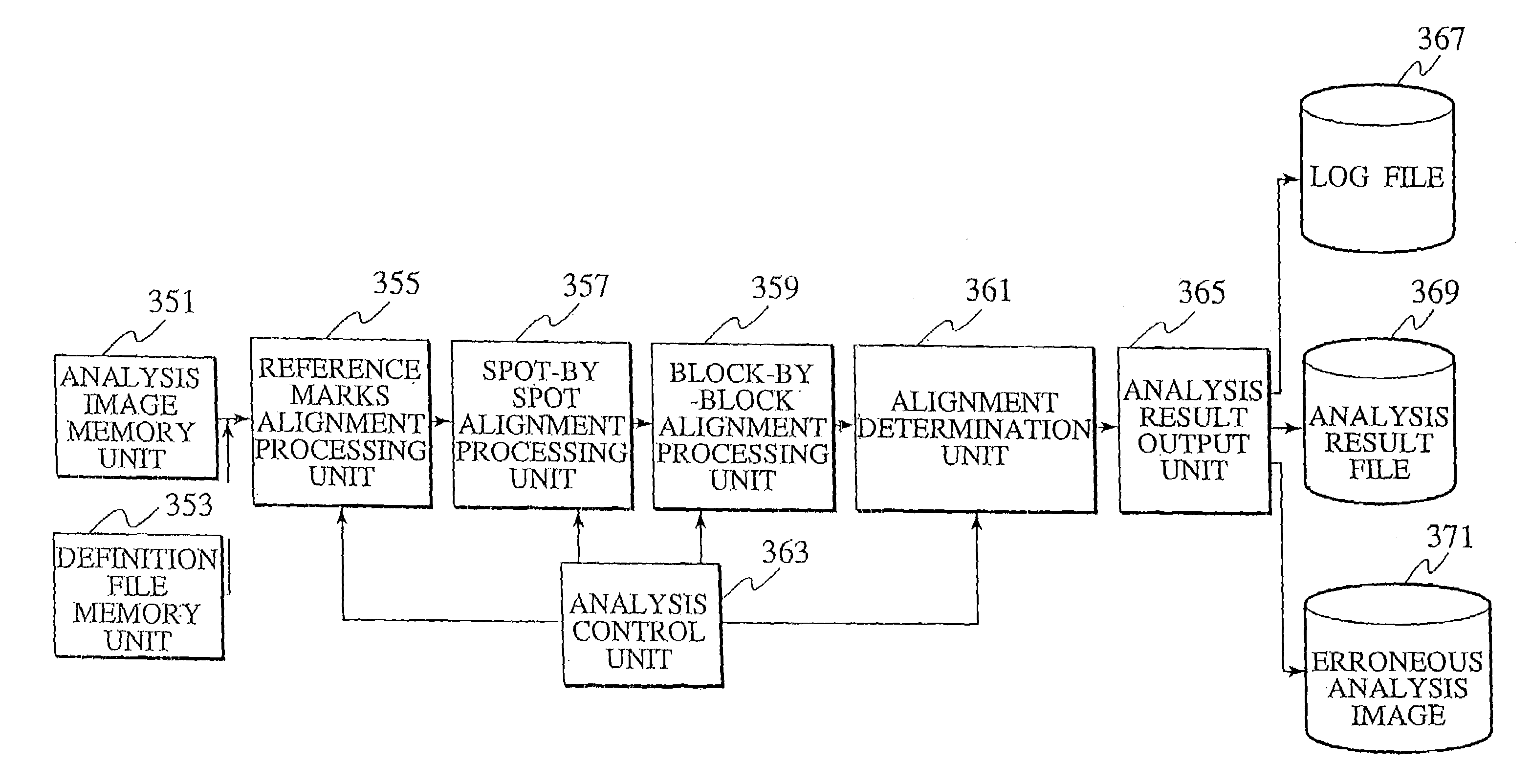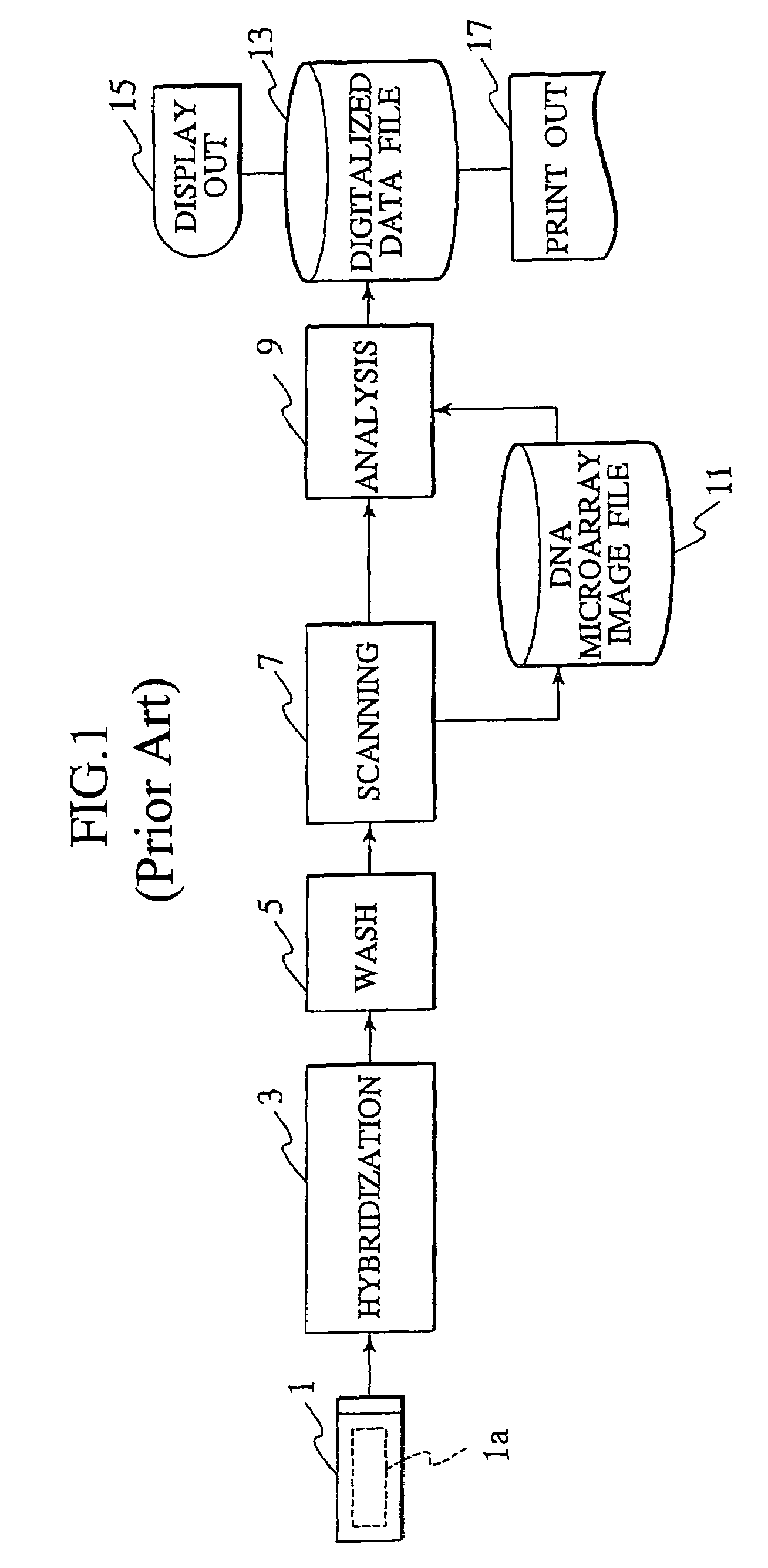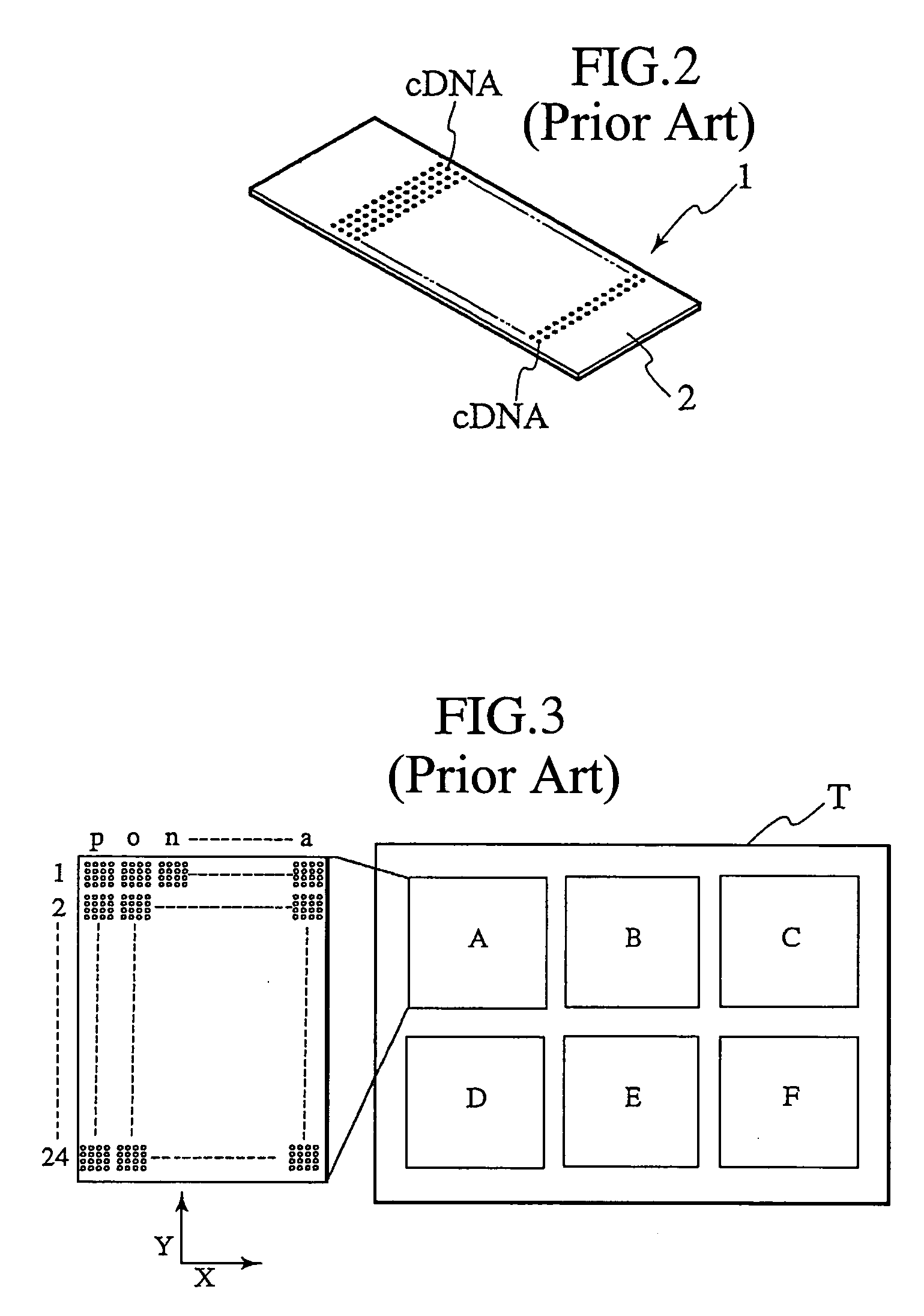Probe reactive chip, sample analysis apparatus, and method thereof
a reactive chip and reactive chip technology, applied in the field of analyzing a dna microarray and a sample using a dna microarray, can solve the problems of low machined precision of the substrate, mechanical precision error, misalignment, etc., and achieve the effect of high accuracy
- Summary
- Abstract
- Description
- Claims
- Application Information
AI Technical Summary
Benefits of technology
Problems solved by technology
Method used
Image
Examples
Embodiment Construction
[0106]Hereafter, a DNA microarray (DNA chip), a sample analysis apparatus, and a method thereof are described in detail, while referencing FIGS. 4 through 33.
[0107]In this embodiment, detection area alignment processing and misalignment correction processing are implemented on a DNA microarray image file, providing a reference mark, which is used for detection area alignment of a DNA microarray image file, is provided upon the DNA microarray substrate to be analyzed, and in addition, a reference pattern, which is utilized for the alignment processing mentioned above as well as misalignment correction processing, is deployed within a block comprising the spot region of the DNA microarrays. In addition, in this embodiment, the alignment processing is performed in a plurality of phases: by DNA microarray, by spot, and by block.
[0108]FIG. 4 is a block diagram illustrating the overall configuration of a sample analysis system according to an embodiment of the present invention.
[0109]As s...
PUM
| Property | Measurement | Unit |
|---|---|---|
| area | aaaaa | aaaaa |
| fluorescent intensity | aaaaa | aaaaa |
| nucleic-acid | aaaaa | aaaaa |
Abstract
Description
Claims
Application Information
 Login to View More
Login to View More - R&D
- Intellectual Property
- Life Sciences
- Materials
- Tech Scout
- Unparalleled Data Quality
- Higher Quality Content
- 60% Fewer Hallucinations
Browse by: Latest US Patents, China's latest patents, Technical Efficacy Thesaurus, Application Domain, Technology Topic, Popular Technical Reports.
© 2025 PatSnap. All rights reserved.Legal|Privacy policy|Modern Slavery Act Transparency Statement|Sitemap|About US| Contact US: help@patsnap.com



